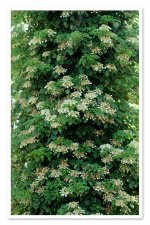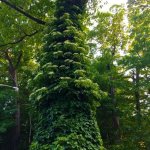Starting last year my wife and I began making more of an effort to clean up our front and back yard. This year, and in coming years we hope to get more into it, and throughout the lengthy time we plan to spend in our house get things into better shape. The main issue right now is our backyard. As a whole it doesn't look too bad, but the gardens are a mess. To give you an idea, this is largely what it looks like as a whole:
The next thing I want to focus on are the two garden areas along the fence back there. I'd like to make a clear, and smooth delineation between the garden and lawn, and maybe buy some sort of artificial separator to dig into the face of the garden. This is what it looks like now:
Basically my goal is to eventually make it look like a real garden, rather than the mess it is now. On the other side of our patio we have a hill that's also a mess. Not sure what can be done there without extensive work, as we don't even have much grass.
In our front-yard things look a little better but still not great:
I'm being a little facetious with the thread and don't expect any essays in return, but if you have some time on your hands suggestions are welcome. What can I do with this mess?
The next thing I want to focus on are the two garden areas along the fence back there. I'd like to make a clear, and smooth delineation between the garden and lawn, and maybe buy some sort of artificial separator to dig into the face of the garden. This is what it looks like now:
Basically my goal is to eventually make it look like a real garden, rather than the mess it is now. On the other side of our patio we have a hill that's also a mess. Not sure what can be done there without extensive work, as we don't even have much grass.
In our front-yard things look a little better but still not great:
I'm being a little facetious with the thread and don't expect any essays in return, but if you have some time on your hands suggestions are welcome. What can I do with this mess?







